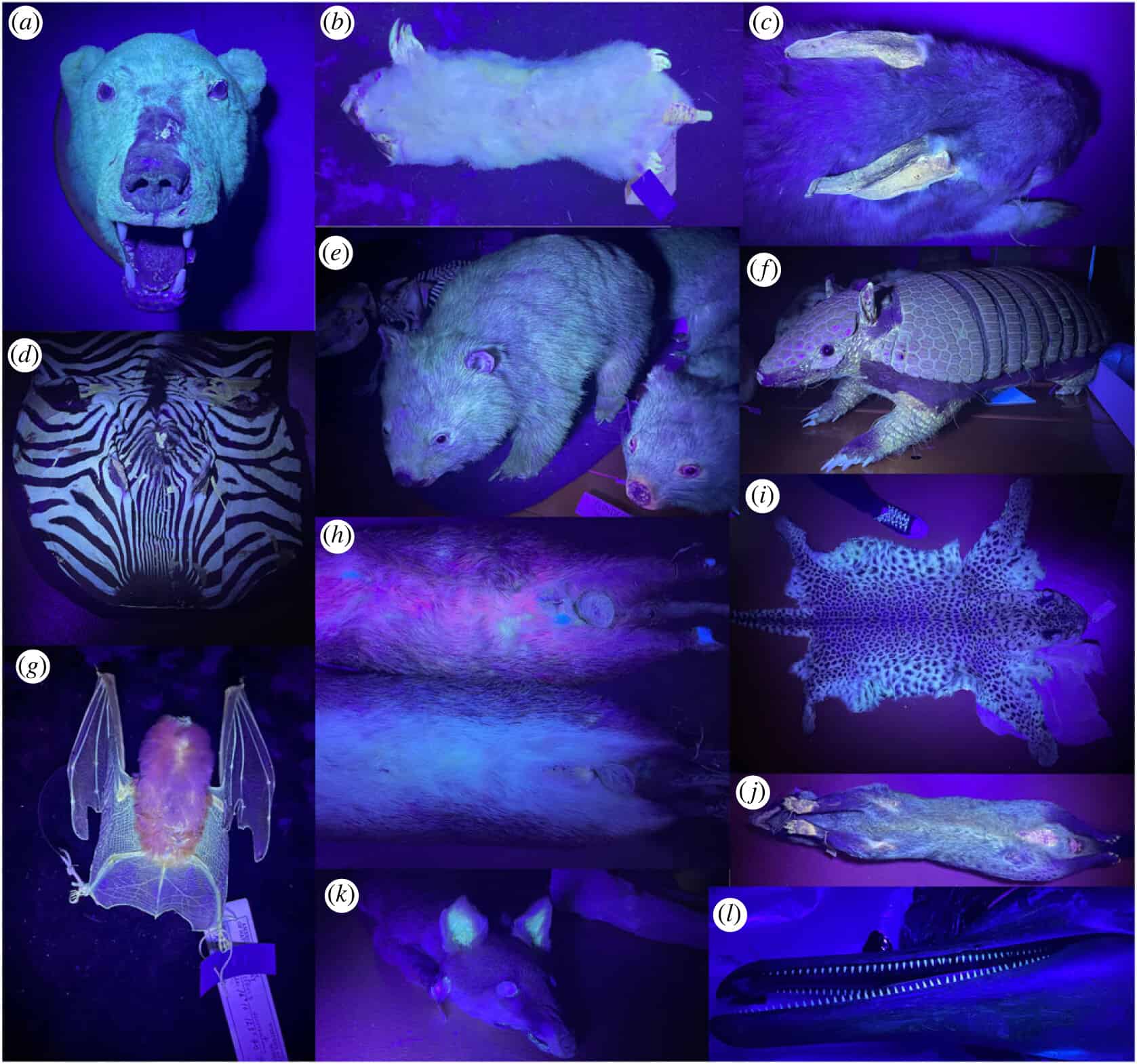Over the past few years, there has been An increasing number of reports About the fluorescence of mammals under ultraviolet radiation. Wombats do it, platypus do it, and even squirrels do it. However, we didn’t know exactly how common this was – until now. The researchers studied 125 species, representing half of all mammal families, all of which glow under ultraviolet light in different ways.

Fluorescence occurs when the energy of ultraviolet light—a form of electromagnetic radiation that is invisible to humans—is absorbed by certain chemicals. They then emit visible light, which is low-energy electromagnetic radiation. This happens with white clothing that glows under UV light, for example. But it’s also surprisingly common in the animal world.
Shine, my darlings, shine
Animals can glow under UV light due to proteins or pigments in their fur, scales or skin. It has been reported for birds, amphibians, fish, corals, and reptiles but less frequently in mammals. Bones and teeth glow fluorescent, as do fingernails and white human hair. Rodents They glow pink under UV light, while the platypus glows blue and green.
Researchers from Curtin University and the Museum of Western Australia used preserved and frozen specimens from the museum to identify which ones were fluorescent. They ruled out that the glow was not an artifact of the preservation process, and found that all 125 mammals had fluorescent claws or teeth, while 86% had fluorescent fur.
“We report fluorescence for 125 mammalian species, from half of all mammalian families,” the researchers wrote. “While the amount and location of fluorescence varied between species, all showed some form of pronounced fluorescence. Areas of fluorescence included white and light fur, quills, whiskers, claws, teeth, and bare skin.
In their study, the researchers first started with the platypus (Ornithorhynchus anatinus) to see if they could replicate previously reported fluorescence. They imaged the samples under UV light and observed a glow. They then confirmed this using fluorescence spectroscopy, a technique that records the “fingerprints” of the glow.
They then repeated this process with other mammals, finding evidence of fluorescence in the fur, spines, skin and nails of koalas, bandicoots, Tasmanian devils and even cats. In particular, they note that white and light-colored fur shines, while dark pigmentation prevents this. For example, a zebra’s dark stripes do not glow.
The researchers also used their data set to see if luminescence is more common in nocturnal species. For this reason, they linked the total area of brilliance with traits such as nocturnal activity, diet, and movement. They found that nocturnal animals were indeed more fluorescent, while aquatic species were less fluorescent than those that live on land or in trees.
“We demonstrated widespread fluorescence among mammals by confirming the phenomenon using spectroscopy and then examining the observed fluorescence across mammalian lineages,” the researchers wrote.
A pioneering study by Curtin University and the Western Australian Museum sheds a bright light on the mystery of fluorescence in mammals. Far from being a rare phenomenon, it appears to be a common trait among many species, highlighting biodiversity in a whole new way. This discovery also raises fascinating questions about the evolutionary advantage this glowing trait may provide.
For example, could fluorescence play a role in communication or mating among nocturnal animals? What are the environmental impacts, if any, of fluorescence? Do glowing animals have an easier time navigating or finding food in the dark? Are they more or less vulnerable to predators? To date, these questions remain to be answered, but they provide an exciting avenue for future research.
The study was published in the journal Royal Society Open Science.




/cdn.vox-cdn.com/uploads/chorus_asset/file/25550621/voultar_snes2.jpg)

More Stories
Watch a Massive X-Class Solar Explosion From a Sunspot Facing Earth (Video)
New Study Challenges Mantle Oxidation Theory
The theory says that complex life on Earth may be much older than previously thought.